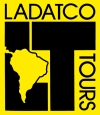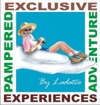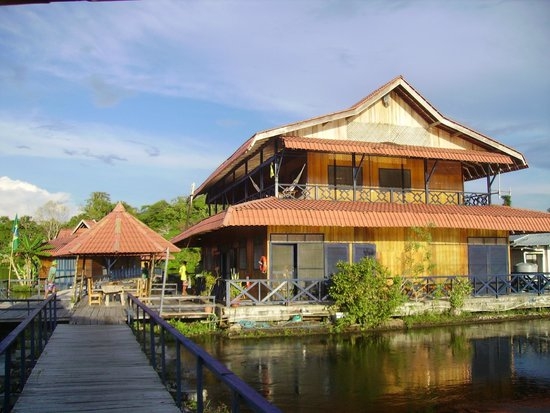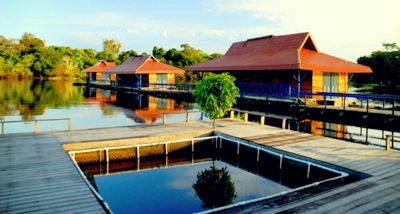

Destinations
Experiences
 |
L A
D A T C O T O U R
S |
 |
||||||||
| HOME | South America | Falkland Islands | Antarctica | Unique Destinations |
Unique Experiences |
Newsstand | ||||
 |
Uakari Floating Lodge
Mamiraua
OUR MISSION |
 |
ABOUT UAKARI FLOATING LODGE FAQs - in their own words:
What should I bring?
Binoculars (The Lodge doesn’t have binoculars for rent)
Raincoat
Sunscreen
Repellent
Sunglasses
Hat or cap
Dry bag.
What are the appropriate clothing for the visit?
Pants and long sleeve shirts for outside activities (lightweight fabrics)
Hiking shoes in the dry season (we provide rubber boots)
Light clothing, such as shorts, shirt and slippers for the time you are at the Uakari Lodge
A sweater, for windy and rainy afternoons or evenings
Swimsuit to enjoy the visit to the community (in the high season, between April and July)
· Note: It is suggested that the hiking clothes for the trails are in neutral shades like beige and green leaf. Also be sure to bring enthusiasm and willingness to take advantage of being in this unique corner of the planet.
Is there a limit of weight for the luggage I can take to Uakari Lodge?
We ask that the luggage is kept to a maximum of 15kg per person. Any extra luggage can be left in our office in Tefé.
I would like to read about the area, what books do you suggest?
BATES, Henry Walter. The Naturalist on the River Amazons. STACKPOLE.
BATES, Henry Walter. In the Heart of the Amazon Forest (Great Journeys). Penguin Books, 2007.
MELLO. Thiago de. Mamirauá. Photos: Luiz Claudio Marigo. Tefé: Sociedade Civil Mamirauá, 2002.
BANNERMAN, Matt. Mamirauá: a guide to the natural history of the Amazon flooded forest. 2.ed. Tefé: Instituto de Desenvolvimento Sustentável Mamirauá, 2008.
Do you accept credit cards at the Uakari Lodge?
For products purchased at the lodge or consumed at the bar, credit card payments can be done at the office in Tefé, upon return from the Lodge. But remember that it is still recommended to have cash in small bills to purchase crafts in the visit to the communities. If you need laundry services, payment shall be made in cash, as this is passed directly to the laundry service staff.
Do you have access to the internet or mobile signal?
There isn’t mobile signal. There is free wi-fi internet, but the signal is unstable.
Is there malaria at Uakari Lodge?
The Mamirauá Reserve is an area of very low incidence of malaria, and the cases are virtually nonexistent.
It´s common the use of malaria pills. If you have the intention to use those pills, we recommend consulting a doctor because of side effects caused by them.
How do I recharge my equipment, while I’m in Uakari Lodge?
Our energy is mostly produced by the sun – we invest in clean energy. So, you can recharge the batteries of your cameras, mobile phones, tablets and computers when the sun is very strong (between 11: 00hs and 15: 00hs).
What is the best time or period to visit the Uakari Lodge?
The best time will vary according to your interest. The rainy season lasts from December to March. In April the flooded season begins, it´s when the forest is completely flooded and the activities are done in boats and canoes. From August to November it is the dry season, when you can go hiking and when there is a higher concentration of fish and birds.
How is the schedule from December to March?
The rains begin in December and it is time that the waters begin to rise. At this time the temperature is cooler and probably you will witness a famous Amazonian rain, which happens to be a memorable experience. You can do all the activities, because the trails are dry. However, in mid-March some may be partially flooded. Good time to observe dolphins, moving seamlessly between “paranás” and lakes. At some point the communities that are working with the preservation of turtles will make the release of the animals on the beaches. Also, at this time, the villagers begin to harvest the cassava and prepare the flour. For those who enjoy more privacy, this is the time, for it is the low season for tourism in the Amazon.
How is the schedule from April to July?
In April the water is already high, but the peak is in June and July. The rains stopped, and now they happen in short storms. The sun comes up regularly and makes enough heat. You cannot walk in the Reserve and all activities involve boats or canoes, including the visits to the communities whose houses remains dry thanks to stilts. The aquatic fauna is dispersed, so it is quite difficult to see any species of that environment, but probably you´ll can see dolphins and caimans. However, due to the smaller space in the forest – which is partially flooded – primates are easier to be seen. At this time visitors have the unique opportunity to paddle a canoe into the forest. It is also the best time to observe sloths, coming out of the woods to the edge in search “Munguba” flowers, an eccentric typical tree of lowland environments. June and July is high season, so schedule your visit well in advance.
How is the schedule from August to November?
In mid-August the water is already low, and in October and November and it reaches the lowest levels. Some spots are less accessible, even with small canoes to paddle. There is little rain and the weather is warm. The dry season is the time to wake up to the sound of pirarucus hitting the tail against the water or even listening to a caiman eating a fish under your floating room. Caimans, aquatic and semi-aquatic birds and fish are in evidence and easily observed, and with a little luck you can see the turtles laying eggs on the beaches. In the communities it is the time to plant cassava, beans and other crops and it is the most profitable time for fishing, because the fish are now concentrated in now small water bodies.
In case of emergency, how is the medical care?
We always have a first aid kit at the lodge with some basic itens and in more serious cases, there’s always a speedboat available to take the guests to the nearest public hospitals that are in the city of Alvaraes (approx. 30 minutes) or in the city of Tefé (approx. 1 hour)